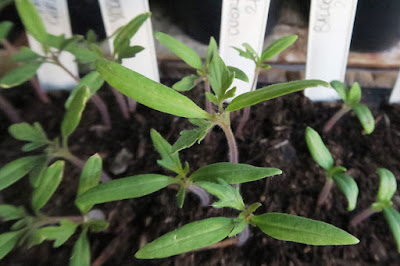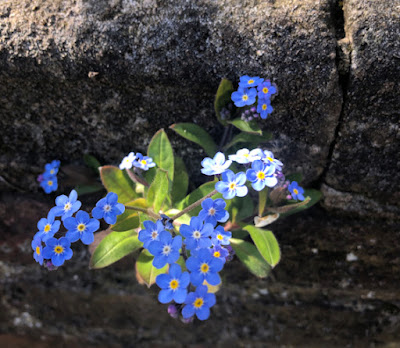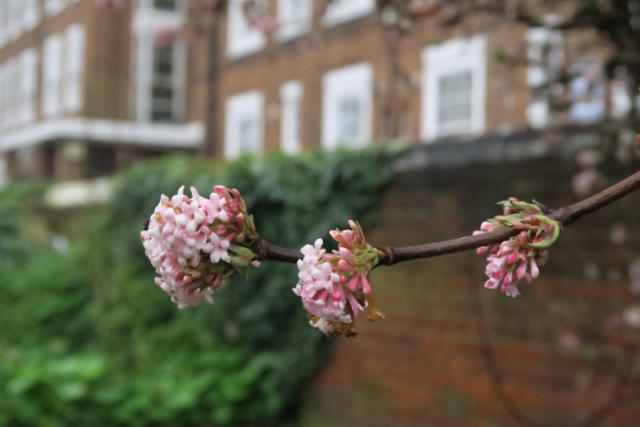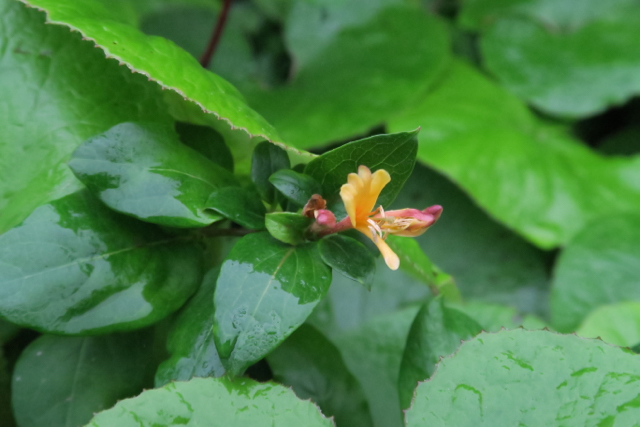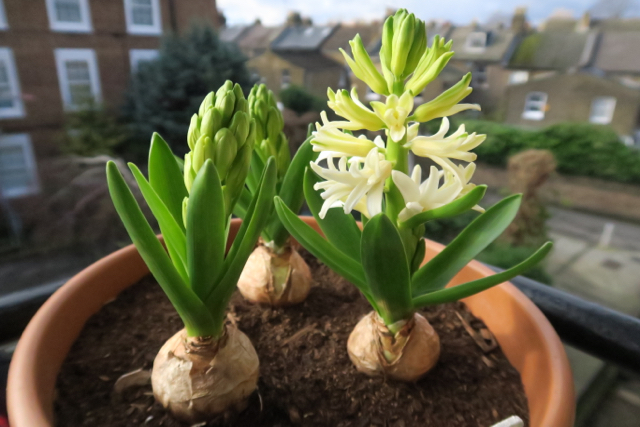Let's face it, progress is slow in the veg garden even in the mildest of winters - those little plants know that they’re better off snuggled into a protective blanket of soil, slugs notwithstanding. But if there’s nothing much for me to see, at least there are lots of lovely smells at this time of year.
It wasn’t a day to be outside for long on Friday (or any day this past week) but, walking back from dropping off my recycling, I found myself drawn into the garden by a delicious smell wafting over from the stand of Viburnum x bodnantense 'Dawn'. And as I tugged a branch towards me to better appreciate its scent close up, I heard the angry buzzing of a disturbed bumble bee. A positive sign as bumbles are the first bees to wake up in spring and good to know that there's food for them.
Someone (not me) planted two of the shrubs a long time ago and their scruffiness irritates me hugely for most of the year. They haven’t been maintained by the contract gardeners so have grown in height and width to cast deep shade over the border until their leaves drop in late autumn. This shrub should be maintained by thinning out the old wood at the base, thereby allowing the new shoots room to grow; I frequently harbour thoughts of heading out with my pruning saw - my type of guerrilla gardening.
But with the appearance of their dainty pink flowers in early winter, all is forgiven. The perfume is delicious but strangely doesn’t work indoors (for me, anyway), much better to appreciate it wafting on the wind.
The next border along is a thicket. Our community gardening group (as was) were given this area for food growing but resisted clearing it straightaway; it was a jungle even then but we told ourselves that at least tenants overlooking the gardens had some greenery to look out onto until the food garden was less bare earth. Now I worry that by sorting it out I’ll be destroying a perfect habitat for this urban garden’s wildlife.
 |
| See what I mean? Thicket. |
It’s now been taken over by Petasites, another (very invasive) winter flowering plant with a strong baby-talc perfume. Staring at it, I started to think about winter plants that brighten up the garden with their scent.
I wrote about Petasites in depth five years ago, in January 2015. At that time I had plans to conquer it, dig it up and relocate a few plants. Needless to say, that's still on my to do list. But there's an idea tickling my thoughts - how would it be if the Petasites were transplanted into the Viburnum border? Good, eh? There might be a bit of sensory overload on the olfactory front, and I'd have to rescue my beautiful ferns first (a very lovely bronze Dryopteris erythrosora), but it’s a plan. When the weather is warmer though.
It's would be a massive challenge as the plant has spread the length of its 30ft long home border. That whole area needs culling; it's a thicket of tangled dogwood, hebe, Elaeagnus, Choysia, ivy and honeysuckle ... which brings me to my next winter smelly.
This, I love. Like roses, I find it impossible to pass by without a not-so-surreptitious sniff of the scent. The flowers are edible with a sweet burst of nectar at the base; they’re not known as
Honey suckle for nothing! This is a bog standard honeysuckle which has flowered courtesy of a mild winter but there
is a winter flowering honeysuckle -
Lonicera purpusii- that has highly scented white flowers from early winter onwards. Duly noted for when this border is conquered.
And finally (thanks for bearing with me), I have to mention
Daphne odora ‘Aureomarginata
’. The clue is in the name, a most beautiful shrub with a not-to-be-ignored intense perfume.
I walk in olfactory heaven past a clutch of these most days, planted in a long roadside border outside council flats. I can’t help but marvel at this municipal border as it’s planted up with the most
desirable of plants - the above mentioned Daphnes, a swathe of large pale green Hellebore foetida, Euphorbia rigida, grasses, Brachyglottis (aka Senecio or Daisy Bush) and Sarcococca, another excellent shrub for scent and wildlife.
 |
| Sweetly scented flowers and berries for birds - what’s not to love! |
Both Daphne and Sarcococca are shrubs that are sadly lacking in the gardens here but I’ve Google searched for a supplier several times and my fingers are creeping closer to the ‘click to buy’ button, paid for with my jar of babysitting money, saved for exactly this purpose. Watch this space .... !



